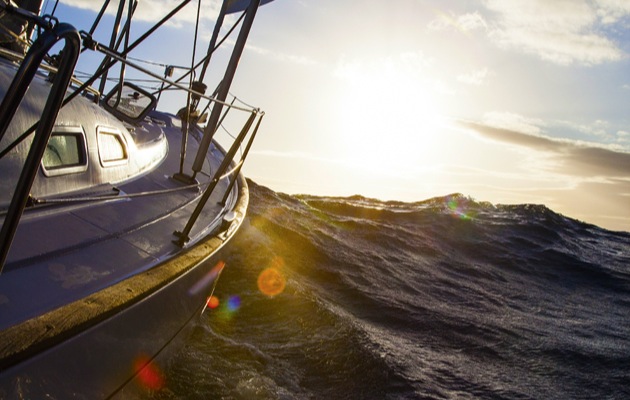Sailor and meteorologist Chris Tibbs advises go south for comfort and safety; go north for speed
Weather is a large part of any Atlantic crossing: deciding when to go, which route to follow and the sails to carry. The main consideration is to avoid the hurricane season from June to November, so most yachts leave in late November to arrive in time for Christmas, although the tradewinds in January are often stronger.
However, it is human nature to push boundaries and some crews always leave early to get a longer season. The earlier you leave, though, the more important it is to stay east before committing to a westerly course. Late hurricanes generally develop to the west, making a passage via the Cape Verde islands more attractive. It shortens the time in potential hurricane areas and offers an escape route south as hurricanes rarely track south of 10°N.
Flexible sailplan
During a typical crossing, the tradewinds will be Force 4 or 5, with some lighter periods and a few days of winds of 25-plus knots. A flexible sailplan is necessary to take account of the changing wind strengths – there is no one-size-fits-all answer. The most common sailplan is goosewinged, with most skippers carrying a specialist downwind sail for when the wind goes light.
Because squalls are common and can have gale-force gusts on the leading edge, it is important to be able to reduce sail quickly. Boats with only asymmetric spinnakers tend to struggle in strong downwind conditions and I would always carry a whisker pole to pole out a headsail as well.
Sailing hot angles may work for a lightweight flyer, but it adds a lot of distance. For a heavier cruising boat it is hard to gain the increase in speed to compensate for the extra distance. Once hull speed is reached, shorter will always be faster. (See our feature on the best yacht for an Atlantic crossing)
North is fastest
With well-established high pressure, a direct (that is, northerly) route is usually fastest, staying far enough away from the high to keep the wind, but minimising distance. However, the less established the high is, the greater the chance of a mid-Atlantic trough or low developing, giving adverse winds. In this case a more southerly route is better.
Racing boats often take the northerly route and the faster the boat, the more likely this will pay off. However, it runs the risk of meeting depressions which develop mid-Atlantic.
These should not be underestimated and the potential gain of passing north of a depression must be balanced against the risk that it could deepen and track across the route. The route is also more prone to a northerly swell.
The southerly route, on the other hand, offers lower risk, with steadier tradewinds and less chance of an uncomfortable northerly swell.
When does the engine go on?
I like to arrive with at least one-third of my fuel left for safety. Others will put on the engine when the wind drops and call in at Cape Verde to refuel if necessary. The choice of route may also depend on fuel capacity and a crew’s willingness to use the engine.
A mid-Atlantic trough giving 24-48 hours of light wind is not unusual and can be motored through to keep on schedule. Yet for some crews, the engine is only for emergencies and a more southerly route will reduce the risk of light winds. Neither route is right or wrong. They are just different ways of sailing in what may be very different boats.
I have sailed across the Atlantic over 20 times and no two times have been the same. There can be a great deal of variation and weather forecasts are important. There needs to be some flexibility in the route to take account of forecasts and how they change over time. I like to pick up weather charts from NOAA and also GRIB files.
So, the default options are: go south for comfort and safety; go north for speed. Most boats take a more middle route, depending on the forecast.
Chris Tibbs is a meteorologist and sailor with over 250,000 miles at sea, including three circumnavigations and six speed records. He is a lecturer to ARC crews and provides routeing services.
See also: 15 things you need to know when planning an Atlantic crossing
This is an extract from a feature in the November 2014 issue of Yachting World
 If you enjoyed this….
If you enjoyed this….
Yachting World is the foremost international magazine for bluewater cruisers and offshore sailors. Every month we have practical features to help you plan and prepare to realise your sailing dreams.Build your knowledge month by month with a subscription delivered to your door – and at a discount to the cover price. See our latest offers now.







